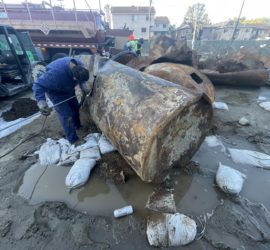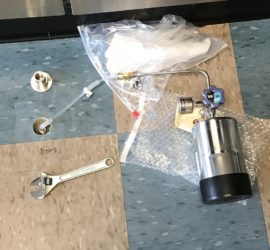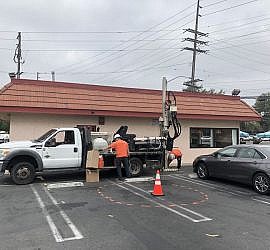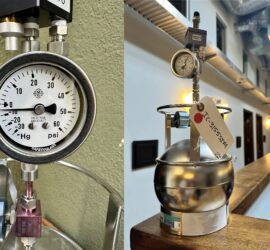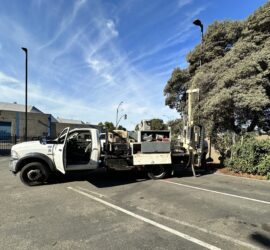Gas Station Contamination Soil Testing
Gas station contamination soil testing is the scientific process by which geologists drill and collect samples from underground, in order to address environmental pollution concerns. Gasoline service stations typically comprise underground storage tanks (or USTs), which hold thousands of gallons of fuel. And these USTs can gradually leak gasoline and diesel into the subsurface over time. Similarly, the underground piping from these USTs to dispensers can also leak. Depending on the characteristics of geologic units on-site, depth to groundwater, and volume of fuel lost, the government may require clean-up action. This phase of work is called remediation, which can be a scientifically complex and highly bureaucratic aspect of the environmental engineering sector. Updated September 10, 2022.
How Contamination Happens
Gas station contamination soil testing is the specific task that checks if soil and groundwater contamination exists. When gasoline or diesel enters the subsurface in the liquid phase, it travels vertically and horizontally underground. And different types of soils have different fuel migration characteristics.
Gasoline Contamination Migration
For example, course grain sand and gravel layers allow gasoline to quickly flow through in a mostly vertical fashion, with little lateral dispersion. This happens because the pore space and grain distributions are larger, allowing the chemical to pass in the direction of gravity, without much resistance. On the other hand, silt and clay layers can have the opposite effect. Silt and clay pore spaces are smaller, yet the overall porosity values are higher than sand and gravel. As a result, the chemical gets absorbed into silt and clay and doesn’t migrate within it easily. In fact, this characteristic of silt and clay can also result in a horizontal migration of gasoline and diesel upon contact.
Other factors of Migration
Although the example above brings some clarity to migration pathways to the layperson, the process is much more complex. In fact, there are hundreds of factors that contribute to how a contamination plume occurs. For instance, the molecular properties of the specific chemicals themselves, affect the flow and migration pathways. Similarly, physical properties such as density and aqueous- to vapor- phase evaporation impact contamination plumes. Furthermore, temperature, pressure, and moisture characteristics of the soil underground can also change the way the chemicals react during migration. Moreover, the depth to groundwater and direction of groundwater flow additionally affect the horizontal and lateral extent of the contamination plume. Numerous other factors also play into this process.
Chemicals of Concern
Among other chemicals, Benzene, Toluene, Ethylbenzene and Xylenes (BTEX) are the primary chemicals of concern in gasoline and diesel contamination sites. Additionally, tertiary butyl alcohol (TBA) and methyl tertiary-butyl ether (MTBE) were octane-enhancer additives which were also part of the gasoline formulas in the 1980s. Moreover, each of these constituents have breakdown products.
In order to analyze soil and groundwater for these chemicals, geologists run laboratory analytics for total petroleum hydrocarbons (TPH) and volatile organic compounds (VOCs).
Gas Station Contamination Soil Testing Reports
There are a variety of ways a gas station contamination case can come to light. For instance, a Phase 1 Environmental Site Assessment may recommend a subsurface investigation. In such a case, the environmental professional may suggest a Geophysical Survey. This is to identify the boundaries of USTs and product piping. Moreover, the environmental professional may suggest a Phase II Subsurface Investigation to determine whether there has been a gasoline and diesel release. Subsurface media include soil, soil gas, and potentially groundwater if encountered within a reasonable depth. And the parameters for contamination testing should include volatile organic compounds (VOCs) and total petroleum hydrocarbons (TPH).

